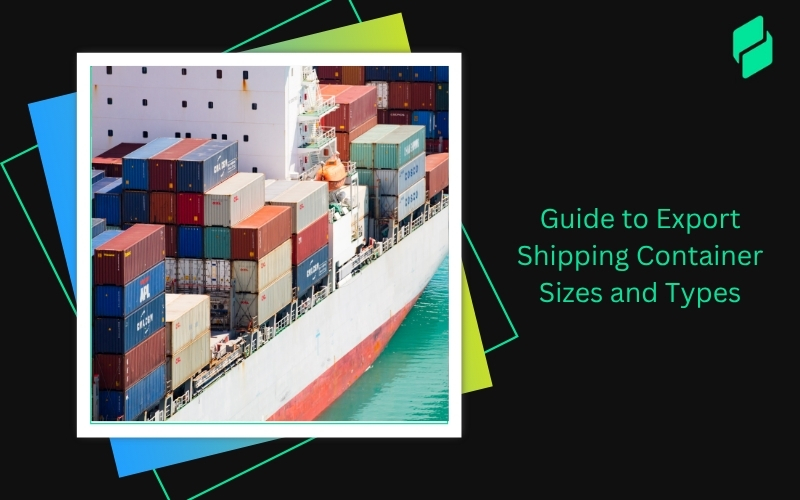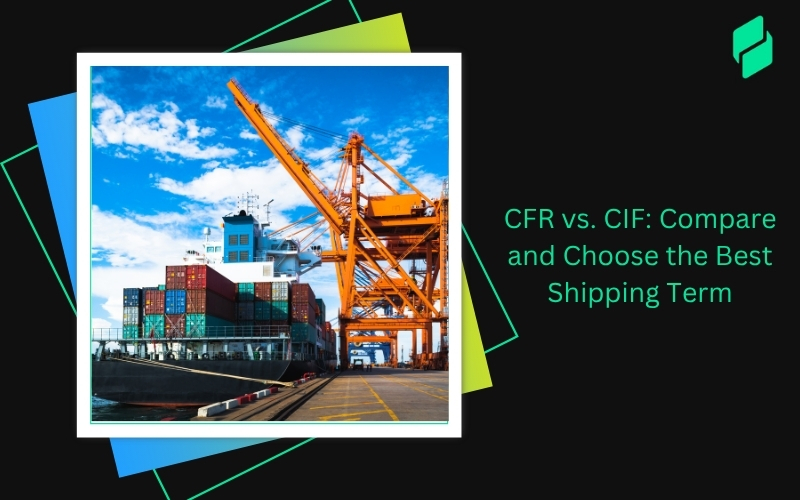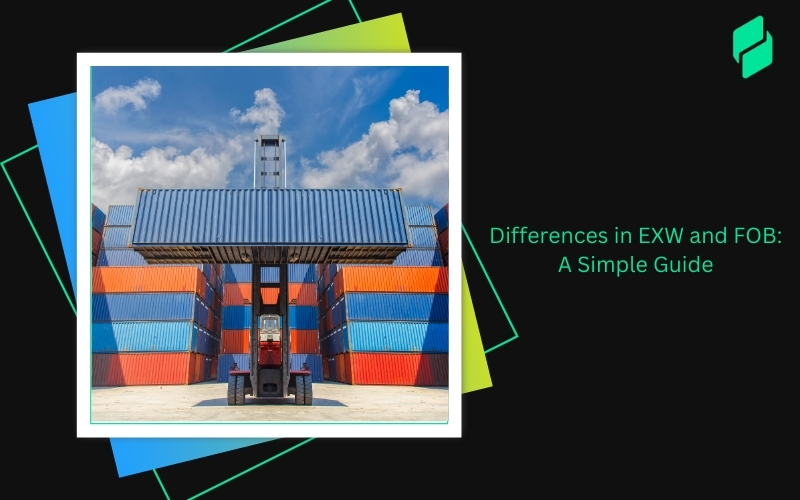She’s struggling right in the middle of an ocean — her hull trembling under the impact of strong winds and lightning from a ferocious thunderstorm.
Your shipment, your precious cargo that she’s carrying, is looking at its doom.
Thor, the God of thunder, is the only entity that can protect this ship.
Or wait…
What if we tell you that there’s an earthly option, too?
Instead of waiting for a situation where the God of Thunder will have to intervene, you can actually opt for an insurance policy. It’s so simple — all you need is inland marine insurance. Right?
Well, actually, it's wrong!
If only the mumbo jumbo around insurance policies was so simple!
In this case, what you need is ocean marine security. The ocean marine security meaning is often confused with inland marine insurance. But both these types are different in terms of the scope of their coverage and the items they insure.
Inland marine cover caters to property on land. And ocean marine cover protects cargo voyaging by the sea.
Optimize your business: use unlimited savings with Pazago fulfilled now!
Get Started ->Overview of marine insurance and its importance for businesses and individuals
Marine cover is a broader term to describe the two types of insurances in question here — ocean and inland marine cover.
Ocean marine cover serves as a safeguard against the loss or damage of ships, cargo, terminals, and any transport by which property is transferred, acquired, or held between the points of origin and final destination.
So, ocean marine cover meaning is plain and clear — it was developed to cater to the needs of shipowners and shipping enterprises. It covers loss or damage to ships, cargo, terminals, and marine liability losses.
You can’t ignore the importance of ocean marine assurance, especially in international trade, as about 90% of global trade is carried by sea.
Understanding Inland Marine Provision
We’ve already explained the basics of ‘marine insurance’ meaning.
Now, we would like to break things down for you and explain both the types included under marine provision in detail, starting with, ‘inland marine insurance’ meaning.
Inland marine ocean meaning is as clear as the day — it is provided to fill gaps in commercial property protection. It extends to property that is mobile or requires unique valuation. This insurance is known for its flexibility and ability to cover goods in transit over land and certain types of movable property.
Then why use the word ‘marine’?
Well, here’s the reason — apart from land, inland marine provision also applies to goods transported through water bodies such as rivers or canals. Hence, the name.
Types of Coverage Provided by Inland Marine Provision

This insurance encompasses a variety of policies. We have listed the most important types for you. Have a look!
- Equipment Coverage for Contractors: This insurance safeguards against the loss, theft, or damage of tools and equipment belonging to contractors. Whether the items are on the business premises, at a worksite, or being transported, they're protected
- Data Equipment Protection: Offers business security against harm or loss to computers, servers, laptops, and other digital devices crucial for data handling. This includes protection from various dangers like fires, water damage, and theft, among others
- Custodial Liability Coverage: This type of insurance is essential for businesses responsible for customer property, ensuring protection against damage while the items are under their care for services such as cleaning, repairs, or storage. It's especially relevant for establishments like laundry services, electronics repair shops, and pet care facilities
- Accounts Receivable Protection: Shields your business from the financial impact resulting from the loss or damage of accounts receivable documents due to non-payment by clients
- Installation Risk Insurance: It offers contractors protection against the theft, loss, or damage of materials, supplies, or equipment during transport or when awaiting installation at a project site
Typical Scenarios and Items Covered Under Inland Marine Provision
Now you know the inland ‘marine provision meaning’. So, it’s time to figure out the broad protection it offers.
This insurance is particularly beneficial for goods, like tools and equipment for contractors, that transit across different locations. Some of the critical high-value items it protects are:
- Construction Equipment
- Medical diagnostic machines
- Fine art
- Solar panels
- Technology equipment
- Computer equipment
- Building material
Basically, inland marine provision meaning applies to the coverage of anything and everything used at a job site or stored in a warehouse.
Benefits of choosing inland marine assurance
You know the inland ‘marine insurance meaning’ and its types, right? So, we thought it would be exciting for you to learn about its benefits as well. Hence, we made this section. Have a look.
Comprehensive Coverage for Mobile Assets
Protection Across Various Locations: Unlike traditional property insurance, which is often limited to specified locations, inland marine security covers assets regardless of location. This is particularly beneficial for items that are frequently moved or transported
Customizable Policies to Fit Specific Needs
Tailored Coverage Options: Inland marine policies can be customized to address the unique risks associated with different types of property, from construction equipment to fine arts
Did you know?
The National Association of Insurance Commissioners reports that inland marine claim has evolved to cover a broad spectrum of property types, reflecting its adaptability to changing business needs.
Risk Management for Goods in Transit
Data by The American Trucking Association shows that goods transported by road are particularly susceptible to various risks, including accidents and theft. And inland marine provision provides a safety net for these goods.
Enhanced Financial Security
Asset Protection: Inland marine enhances a company's financial security by safeguarding against the loss or damage of valuable assets, ensuring that unexpected events do not lead to significant economic setbacks.
In fact, research carried out by The Federal Reserve Bank indicates that unexpected losses can severely impact small and medium-sized enterprises, underscoring the value of comprehensive inland marine.
Understanding Ocean Marine Insurance

We did explain the ocean marine provision meaning briefly. But we have made this section to walk you through all the details at length — ocean marine provision benefits, risks, and more.
Let’s get you started!
Definition and Key Features
Ocean marine is one of the most ancient forms of insurance. It was originally developed to mitigate the risks associated with sea voyages.
This form of insurance is essential for the maritime sector because it provides comprehensive coverage for ships, cargo, and marine liabilities. Its key features include:
- Protection against a wide range of perils
- Adaptability to the specific needs of the maritime industry
- Support for global trade by ensuring financial stability in the event of marine accidents or losses
Different Types of Coverage Offered
So, it’s time we also introduce you to its different types. Have a look.
Hull Insurance
It covers physical damage to the ship itself, including its machinery and equipment. It is vital for shipowners, as it protects the vessel, which is often the largest asset in a maritime enterprise.
The cost of hull insurance can vary significantly depending on the vessel's age, type, and condition, as well as the routes it traverses.
Cargo Insurance
It protects the goods being transported against loss or damage while in transit. Coverage can be tailored to specific voyages or operate under open policies covering all shipments within a set period.
According to the World Shipping Council, cargo insurance is critical because maritime transport carries over 80% of the world's trade by volume.
Protection and Indemnity (P&I)
It offers liability coverage for shipowners, including responsibility for cargo damage, injury or death to crew, and environmental damage. P&I Clubs, which are mutual insurance associations, traditionally provide this coverage.
It’s also important to note that P&I insurance covers liabilities not included in standard hull policies and is often required due to the high potential costs of maritime liabilities.
Freight Insurance
It compensates for the loss of revenue when goods cannot be delivered due to a covered peril. This type of insurance is crucial for shipping companies relying on the successful delivery of cargo for their income.
Key Risks Covered Under Ocean Marine Provision
So, we are gliding you through the next important thing — the risks that this insurance covers. Have a look.
- Piracy: Despite modern security measures, piracy remains a significant threat in certain regions, necessitating comprehensive coverage
- Bad Weather: Severe weather conditions, including hurricanes and typhoons, can cause substantial damage to vessels and cargo
- War and Political Unrest: Conflicts and political instability in certain areas can endanger ships and their cargoes, making war risk coverage a critical component of ocean marine provision.
- Navigational Hazards: Risks such as collisions, groundings, and stranding are inherent to maritime navigation, further emphasizing the need for insurance
Benefits of Opting for Ocean Marine Provision.
Choosing ocean marine provision offers several advantages. And we have listed the most important ones below.
- Financial Security: This insurance type ensures that shipowners and cargo owners are not financially devastated by losses at sea, supporting the continuity of maritime businesses
- Global Trade Facilitation: By mitigating the risks associated with international shipping, ocean marine provision underpins the global trade system, enabling the movement of goods across the world's oceans with confidence
- Compliance and Liability Protection: It helps shipping companies comply with international regulations and offers protection against potentially crippling legal liabilities.
Now you know the ocean marine claim part as well as the inland marine insurance meaning. But that doesn’t rule out that many other factors need to be considered when purchasing these insurance types because these are serious investments that require a lot of money.
This is one reason you need a logistics company such as Pazago to help you with all things insurance. Book a free demo call with our experts, and master the complexities of marine claim meaning like never before.
Differences Between Inland and Ocean Marine Claim
So, it’s time we also walk you through the major differences between both these types in detail.
We have tabulated those differences in the table below. Have a look.
Choosing the Right Inland Marine Claim
Selecting the appropriate inland marine claim holds significant importance for businesses engaged in land-based transportation of goods or equipment.
Inland marine provision serves as a specialized coverage tailored to mitigate the risks inherent in transporting property over land, distinct from conventional commercial property insurance.
Businesses embarking on the choice of inland marine provision must meticulously consider the nature of their transported goods and the associated transit risks.
This insurance category offers high degrees of customization, enabling businesses to tailor coverage to suit their specific requirements. Among the prevalent types of inland marine provision are motor truck cargo insurance, providing coverage for goods in transit via trucks, and builder's risk insurance, safeguarding construction materials and equipment during transit or storage at job sites.
Variables such as transportation mode, goods valuation, and transit distance necessitate thorough evaluation to determine appropriate coverage limits. Furthermore, businesses should assess the reputation and financial stability of potential insurance providers to ensure reliability during claim scenarios.
Collaborating closely with seasoned insurance advisors proficient in inland marine intricacies is essential. These advisors facilitate risk assessments, recommend suitable coverage options, and navigate policy terms and conditions proficiently.
Factors to Consider
The selection process involved several pivotal factors demand meticulous consideration to ensure comprehensive coverage and protection for transported goods or equipment.
Foremost among these factors is the thorough evaluation of the nature and value of the goods being transported. Understanding the specific risks associated with the items in transit enables businesses to tailor their insurance coverage effectively, guarding against potential losses stemming from damage, theft, or other unforeseen circumstances during transportation.
An equally crucial consideration is the mode of transportation employed for shipping goods. Whether goods are transported via trucks, trains, or alternative means, each mode presents its own distinct set of risks and vulnerabilities.
Consequently, selecting insurance coverage that aligns seamlessly with the chosen mode of transportation is paramount to mitigating these risks proficiently.
Additionally, the distance traveled during transit significantly impacts the determination of appropriate coverage levels. Longer distances inherently entail greater risks, including exposure to diverse weather conditions, road hazards, and potential delays.
Thus, conducting a comprehensive assessment of the distance traveled empowers businesses to adjust coverage limits accordingly and ensure comprehensive protection throughout the entirety of the transit journey.
Furthermore, evaluating the reputation and financial stability of potential insurance providers is imperative. Establishing partnerships with reputable insurers boasting a robust history of reliability ensures businesses can rely on swift claims processing and unwavering support during critical junctures.
Thorough scrutiny of policy terms and conditions is equally essential before finalizing insurance agreements. Delving into coverage exclusions, deductibles, and claim procedures helps prevent misunderstandings and guarantees comprehensive coverage across all potential scenarios.
How to Assess the Risks Associated with Your Business or Good?
Risk assessment is a critical step
Here’s how it’s done!
- Reviewing Transport and Logistics Data: Understanding the logistical aspects and previous incidents can highlight potential vulnerabilities
- Geopolitical and Environmental Consideration: Areas prone to conflict or natural disasters require special attention
- Legal and Regulatory Requirements: Compliance with international and local regulations can influence insurance needs and options
A systematic approach to risk assessment ensures businesses are not over-insured or underinsured, balancing coverage with cost-effectiveness.
Importance of Consulting with Insurance Professionals
Now that you know the its types, the risks associated with all the types, and also how to choose one, it’s time to catch another snake by its tail — why should you consider a professional logistics company to handle this side of your business? We have the answers, and we have compiled them below.
Here’s what professionals can do that you can’t:
- Offer Customized Solutions: Experts can tailor policies to fit specific business needs, offering optimal protection
- Use Market Knowledge: Professionals stay abreast of market trends, regulatory changes, and best practices, advising clients accordingly
- Provide Claim Assistance: In the event of a claim, having an experienced team can streamline the process and improve outcomes
Conclusion
While ocean marine insurance covers cargo and ships cruising through the sea (primarily international trade), inland marine claims applies to goods transported on land (via road or inland water bodies).
But no matter the type, marine claims is a critical component of the global trade infrastructure. It provides businesses with the security needed to operate in an inherently risky international environment. By understanding the distinct features and benefits of inland and ocean marine provision , companies can make informed decisions that protect their assets and facilitate smooth operations.
Still feeling intimidated? Not sure where to get started? Don’t sweat — just book a free demo call with us, and our experts will guide you through the best policies customized just for your business.


.png)








